I got an enquiry from fellow-Canadian Sir Charles deMoutonBlack about how the North West Mounted Police carried their 1876 Winchester carbines, and the ammunition for them, at the time of Canada's 1885 North West Rebellion - and how some of the irregular mounted militia units raised in the West for that conflict (who were issued with the same rifle, as needed) handled the same tasks. Since (as usual) I got a bit carried away with my response, I thought i might post it here in case anyone might find it of interest -
Grant; I'm thinkin' about leather. What did the NWMP use to carry the carbine and ammo about 1885? What about the western militia units that also used the 1876 Carbine?
Howdy Sir Charles:
Seems I can never be "brief and to the point" when responding to a question like this, but I hope the following isn't too boring -
Carbine carriage:The NWMP began to supplant their British cavalry pattern saddle with "California" saddles (i.e. western saddles) starting about 1878, and I gather the latter were in general use by 1885 - the usual method of carrying the carbine by then was in a pommel-mounted sling:
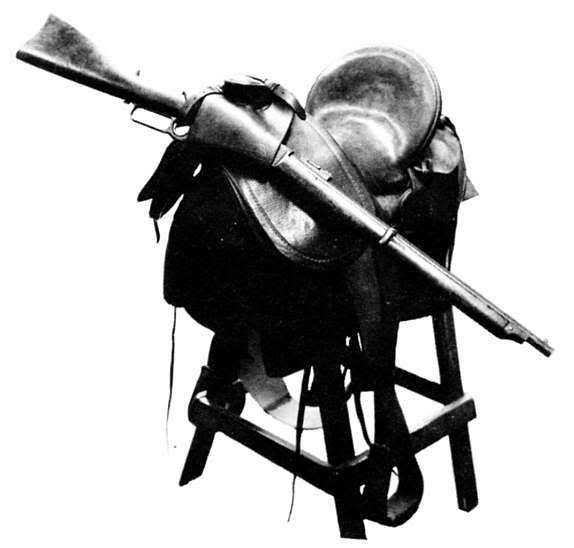
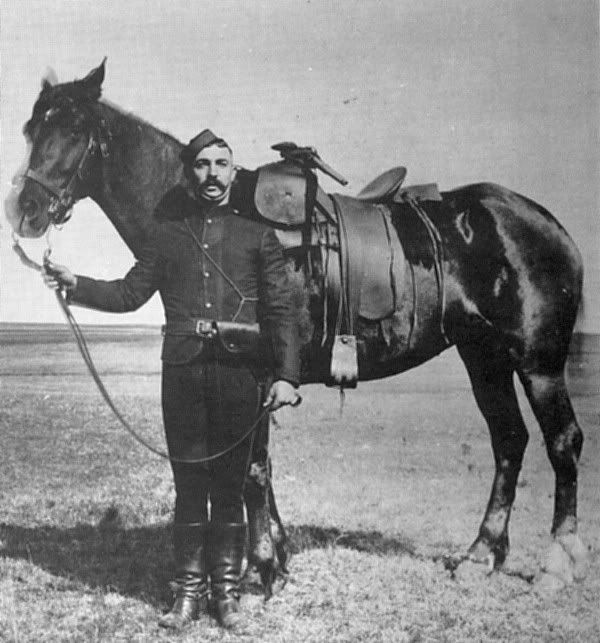
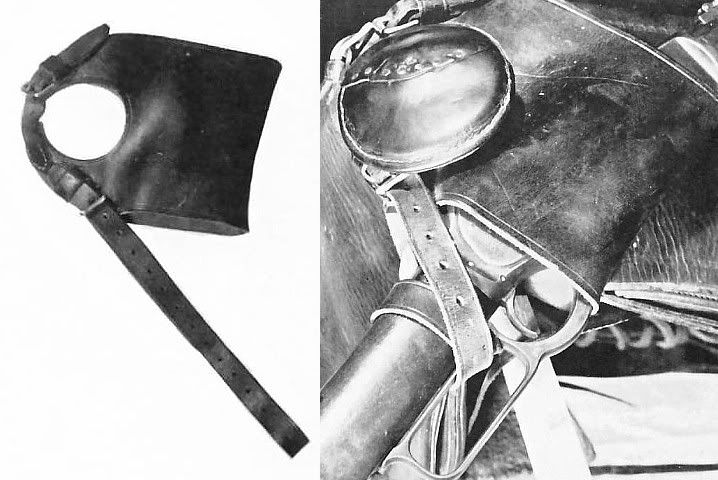
When dismounted, the Mounted Police used no sling for the rifle - any photographs I have seen show them with the rifle cradled, at "shoulder arms", with the butt grounded, etc.
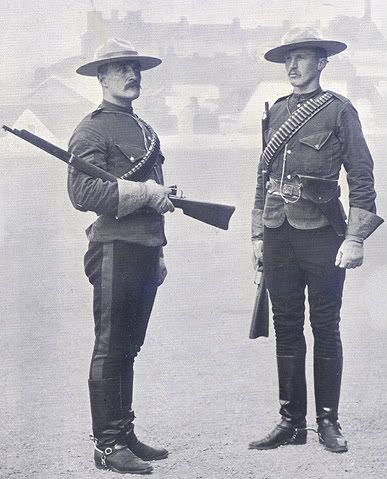

Interestingly enough, the Arms Drill of the Force specified a rather unique procedure for loading/unloading the revolver, when on foot with the carbine -
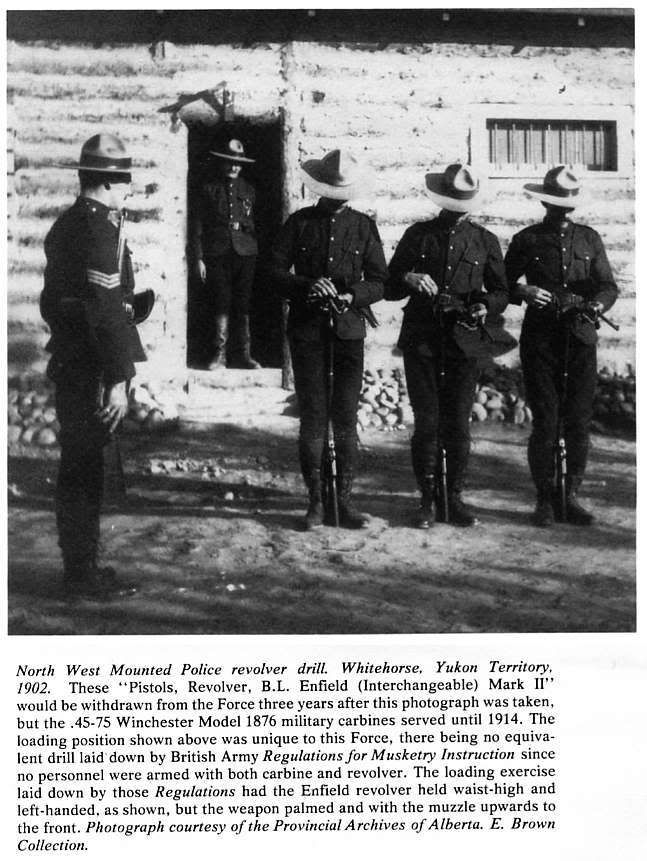 Ammunition carriage -
Ammunition carriage - "Arms & Accoutrements of the Mounted Police, 1873 - 1973" indicates that the ammunition pouches worn on the waistbelt, as issued when the Force was set up in 1874, had by 1877 given way to cartridge belts with loops for .577 Snider carbine and .450 Adams revolver ammunition, and goes on to state:
"After 1878 the Force began acquiring cartridge belts to accommodate the .45-75 cartridge. .... the belts were looped to carry both carbine and revolver cartridges - normally 20 of the former and 12 of the latter." Unfortunately, the book has no clear picture of this type of cartridge waistbelt. However, it is what the fellows in these photographs are all wearing -
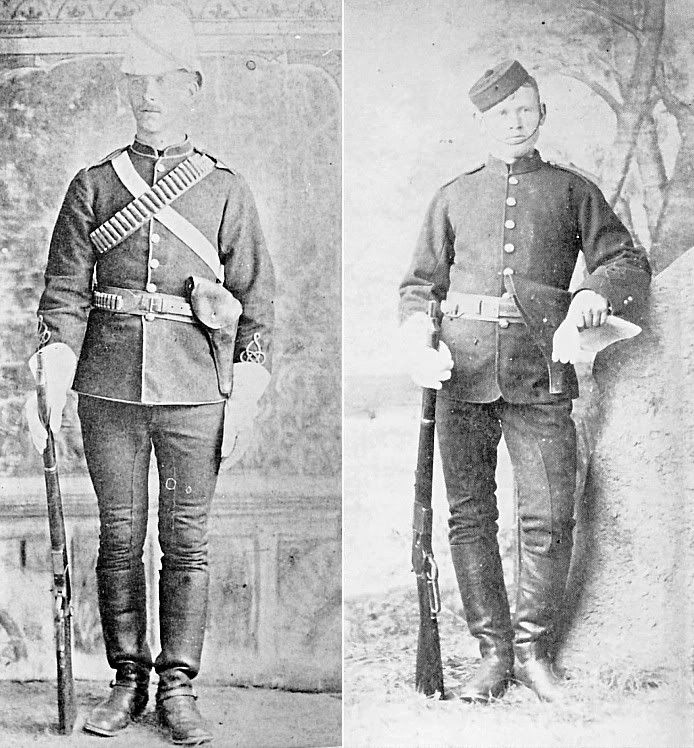
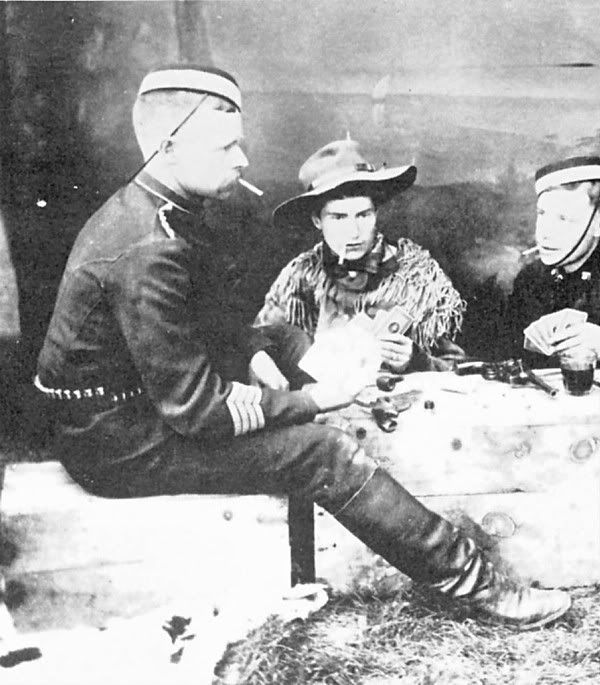
Note that there apparently are no loops at all on the left side toward the front (where the flapped holster was worn), that the 12 revolver cartridge loops are located toward the front on the right side.( i.e. the loops which are visible in the first two photos above) and the carbine ammunition loops were at the back (lower photo.)
From 1874 until about 1900 the Mounted Police were issued a white canvas haversack which was
".... 11 inches wide, eight and a half inches deep and had two-inch sides. The two-inch wide shoulder strap was 44 inches long and had four double eyelets for adjustments." -

This is essentially the same pattern as the haversack issued to the British Army of that time period (and thus copies are available if you look.) It was worn with the strap over the right shoulder and the haversack hanging on the left, toward the back - see the fellow in the left-hand studio photo above, and also the Constable in the next photo below. "Arms & Accoutrements" goes on to say:
"Originally, the haversack was used primarily for carrying extra ammunition on long patrols and when hostilities threatened. Mounties accompanying military elements during the North-West Rebellion almost invariably carried this accoutrement. With the adoption of bandoliers in 1887 haversacks became more of a general purpose carry-all."I should mention that, although there are a lot of period photos showing Constables with Anson Mills web cartridge belts, and others with leather bandoliers (such as the chap is wearing in the left-hand studio photo above) neither of these devices would be strictly "correct" for the actual North West Rebellion period. "Arms & Accoutrements" indicates that although the wide olive-green woven-web Anson Mills belts were first received in 1885, they weren't shipped from Massachusetts until June, so my gut feeling is they might be just a bit out of place in an impression intended to depict a Mounted Policeman during the actual Rebellion hostilities, which ended that month. At any rate, hers is one Constable (photo simply attributed to "the 1880's") wearing such a web cartridge belt -
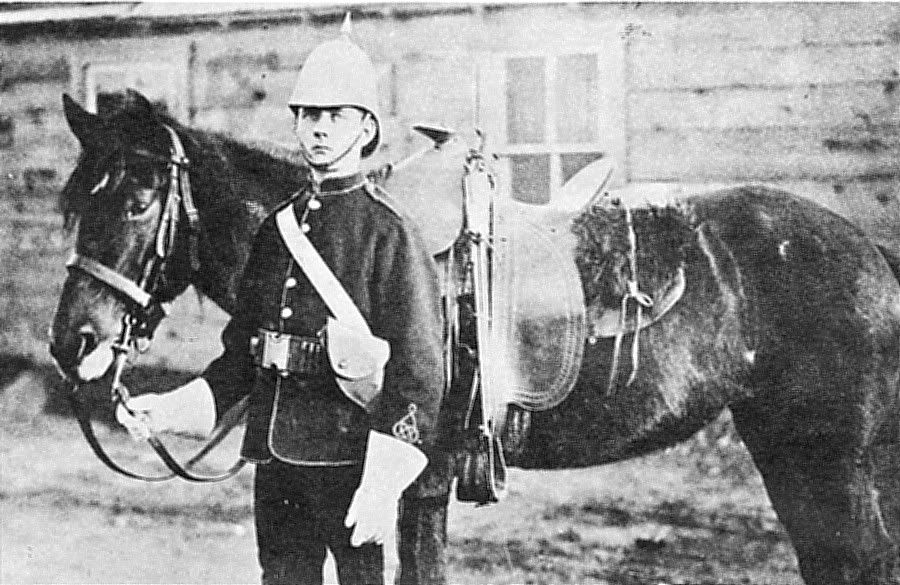
Of 200 such belts in that shipment, 150 were looped for 35 carbine cartridges and 50 were looped for 30 cartridges ..... If one nevertheless wanted to go for this bit of kit, there are reproductions of similar belts on the market for U.S. Indian Wars reenactors though I think the buckles are marked "US" on most of them ....
With respect to leather bandoliers, a number of 1885 images show them being worn by members of the mounted militia units raised in the west - such as the Rocky Mountain Rangers, Steele's Scouts, etc, but "Arms & Accoutrements" states that such bandoliers were not introduced as issued equipment to the NWMP until 1887 .... If the NWMP pattern would interest you, however, I can scan images showing two such bandoliers stretched out, from which it shouldn't be too difficult to have a facsimile made - each of them has 12 loops for revolver cartridges and 40 loops for carbine rounds.
As for the "unofficial" bandoliers, here is a studio photo of an unidentified Rocky Mountain Ranger with his NWMP-pattern Winchester (though for some reason the lever loop has been edited out during re-touching or the like) -
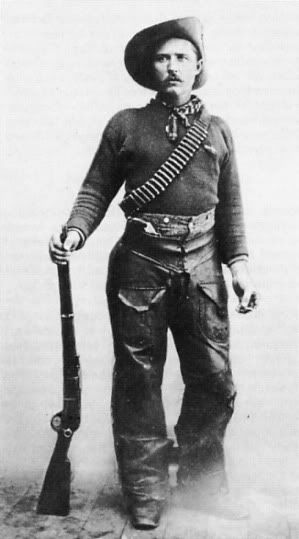
This photo shows officers of the Rocky Mountain Rangers at Medicine Hat (Chief Scout ' Kootenai' Brown on the far right, with O/C Major John Stewart next to him) - note that three or four of them are wearing bandoliers -
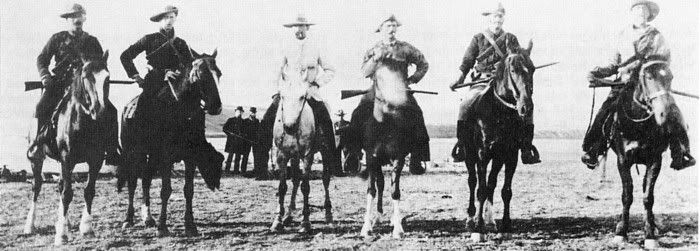
Various period photos I have seen indicate that these irregular mounted militia units tended to carry their carbines/rifles across the saddle pommel like the NWMP, as seen above and also in the following detail cropped from a photo of a Rocky Mountain Ranger patrol formed up near Medicine Hat - though clearly the fellow closest to the camera in the image below has his in a scabbard -
